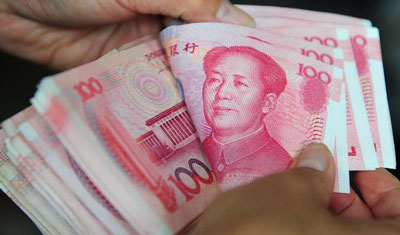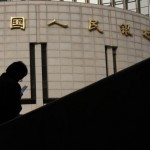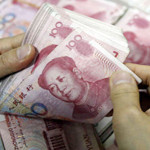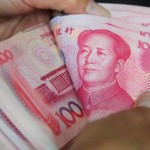RMB exchange rate remained generally stable against a basket of currencies in 2015

Guest Commentator of CFETS, Jan 5, 2016
On January 4, 2016, the China Foreign Exchange Trade System published the latest readings of a series of RMB exchange rate indices. According to the latest figures, on December 31, 2015, the CFETS RMB exchange rate index closed at 100.94, gaining 0.98 percent from the end of 2014; the RMB exchange rate index based on the BIS basket and RMB exchange rate index based on the SDR basket closed at 101.71 and 98.84 respectively, gaining 1.71% and losing 1.16% from the end of 2014. The mixed movements of the three RMB exchange rate indices are a reflection of overall stability of the RMB exchange rate against a basket of currencies in 2015.
January through August, 2015, affected by the rise of DXY index, the RMB effective exchange rate experienced moderate appreciation. During this period, the CFETS RMB exchange rate index reached a peak of 105.65 and there was a persistent gap between RMB central parity and the market rate. On August 11, the PBC improved the quotation mechanism of the RMB dollar central parity rate to give more reference to the demand and supply in the foreign exchange market. After that, the RMB depreciated against USD while the USD weakened against other major currencies. Subsequently, the accumulated gap between the central parity and the market rate were corrected and the CFETS RMB exchange rate index fell back to around 101. The continued weakening of RMB against USD since November further eased the downward pressure on RMB exchange rate. At end 2015, The CFETS RMB exchange rate index and RMB exchange rate index based on the BIS basket both closed near the level of that at the end of 2014.
The current conditions are supportive of relatively stable RMB exchange rate against a basket of currencies. First, performance of the economy is basically stable and growth rate is within a medium-high range. The economic structure has improved and reform deepened. Despite a moderation in export growth, the share of China’s export in the global market expanded further in 2015. The surplus in trade of goods posted USD 539 billion in the first 11 months of 2015. Thus, it is not necessary for China to stimulate export and stabilize growth through a competitive devaluation of the RMB. Secondly, market reaction to the rate hike of the Federal Reserve, a widely watched move and the first rate hike in nine years, was mild as it was already priced in. Going forward, there are uncertainties in the trend of USD due to multiple factors. Finally, the fundamentals of the Chinese economy will shore up the RMB exchange rate in the long run. Given the growth of FDI and ODI flow, the adequate foreign exchange reserves and stability of the financial system in China, international demand for RMB-denominated assets is expected to go up. Thus, there is not a basis for the RMB to devalue continuously. It will remain strong among the reserve currencies.
Further enhancing the decisive role of market and the two-way flexibility of RMB exchange rate is consistent with the direction of the RMB exchange rate regime reform. The RMB exchange rate will reflect, to a larger extent, the dynamic of market supply and demand, and refer to a basket of currencies, and it will move in both directions. Nevertheless, it is worth noting that the market force for the exchange rate to follow is the supply and demand in relation to the real economy, not the pro-cyclical and leveraged speculative forces on the foreign exchange market. Speculators always seek to gain from their speculative behaviors. But these transactions are not based on demand in the real economy and do not reflect real market supply and demand. They only lead to abnormal fluctuations of RMB exchange rate and send misleading price signals to the market. PBC is capable of maintaining the RMB exchange rate basically stable at an adaptive and equilibrium level against those speculators.
In 2016, the RMB exchange rate regime will continue to be based on market supply and demand and with reference to a basket of currencies. We expect that the exchange rate will move in both directions with flexibility. Moreover, the RMB exchange rate policy will also play a bigger role in the automatic adjustment of the balance of payments.
Source: PBC – RMB exchange rate remained generally stable against a basket of currencies in 2015





























